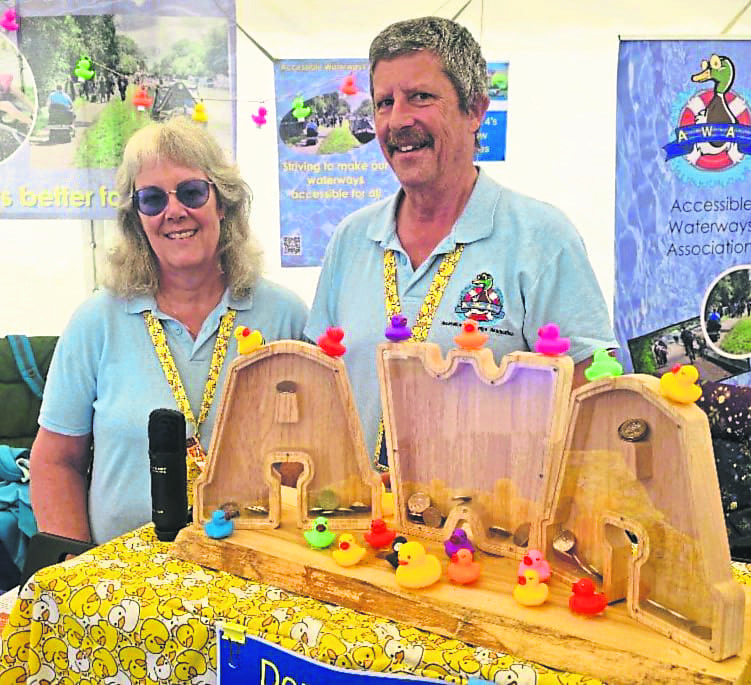TIM and Tracey Clarke, co-founders of the Accessible Waterways Association, have published their podcast on streaming platform Spotify so their work can reach a wider audience. As reported, the association aims to raise awareness of the fact that there are people aboard boats on inland waterways with a variety of accessibility needs.
Its members come from all walks of life, not just those who are living with a disability or long-term health condition, but also young families, cyclists, people with sensory or cognitive impairments, those who are less mobile than they used to be – essentially, anyone who cares about waterways accessibility.

The couple constantly cruise around the UK on board their narrowboat, accompanied by Tim’s pug-cross, Ozzie, who is being trained as a hearing assistance dog, and Tracey’s Labrador guide dog, Loki.
In the podcast, Tracey explained how she is registered blind due to a non-functioning left eye and visual deterioration in her right eye. She has recently been diagnosed with fibromyalgia, which means dealing with lock flights, for example, might prove difficult without help.
“Isn’t it ridiculous, then, that you’re living on a boat and working the locks as we cruise along, and swing bridges,” said Tim. “How does that work?”
Tracey replied to his podcast question: “At the end of the day, a lock is a rectangle of water, and one rectangle is much like any other – some are wider than others, obviously, but Loki has been trained to guide me around the locks, as was Oakley, my previous dog. Loki shows me where the beam is by putting his paws on it.
“On a ‘good eyes’ day, I can see where that enormous beam is, but occasionally they’re not painted and it’s not obvious until I’m right on top of it that it’s there, so it’s a useful reference point for Loki to find the beam. That just gives me a few moments to use my tiny window of vision and to assess the layout of the lock and the best way to go, and where the paddles are.
“Working the actual lock itself is doable by sense of feel, to a degree. I don’t feel safe enough to do it at night or in poor light levels, so that does limit our ability to cruise in less good conditions or when it’s raining hard. As a general rule, I can’t drive the boat for obvious reasons – I can’t judge the length of it, or see which way the canal is bending because it all blends in.”
The pair use two-way radios to communicate when working a lock because Tim can’t hear Tracey’s voice and Tracey can’t see Tim’s hand signals. “It works very nicely,” Tracey added. “It’s teamwork!”
The couple find living on the water beneficial to their health, especially for Tracey, as travelling at such slow speeds means she can cope with her eyesight issues much more easily. Due to family commitments, they have cruised in the London area for the last two years but are ready now to widen their horizons once again.
“It’s a slower pace in terms of travel, but it is a much more restful way of life as well,” she said. “I don’t like the busy hubbub of the city where everybody is in such a hurry to get everywhere. I’m not a city girl, but living in London on the canals is a different London – it’s a back garden, and even in the real centre of the city, once you get down on the water, you get the tranquillity, and it seems to dissipate the business of the city somehow.”
Based on their own experiences as boaters with accessibility challenges, the AWA began as an administrator for the boaters’ blue card scheme – the boating equivalent of the drivers’ blue badge – but was soon formally established following feedback from the Canal & River Trust’s disabled boaters’ forum, in 2021.
The organisation’s podcast is the latest way it is promoting its aims. Meanwhile, the AWA is in urgent need of more volunteers. To find out more about the association and to get involved, visit www.awa-uk.org.uk
Tim and Tracey are once again starring in the TV show Narrow Escapes, which is currently being aired on Channel 4. The second series follows the lives of those who live and work on the UK’s waterways, from solo boaters to families. The series is made up of five episodes, all of which are available to stream on demand.



